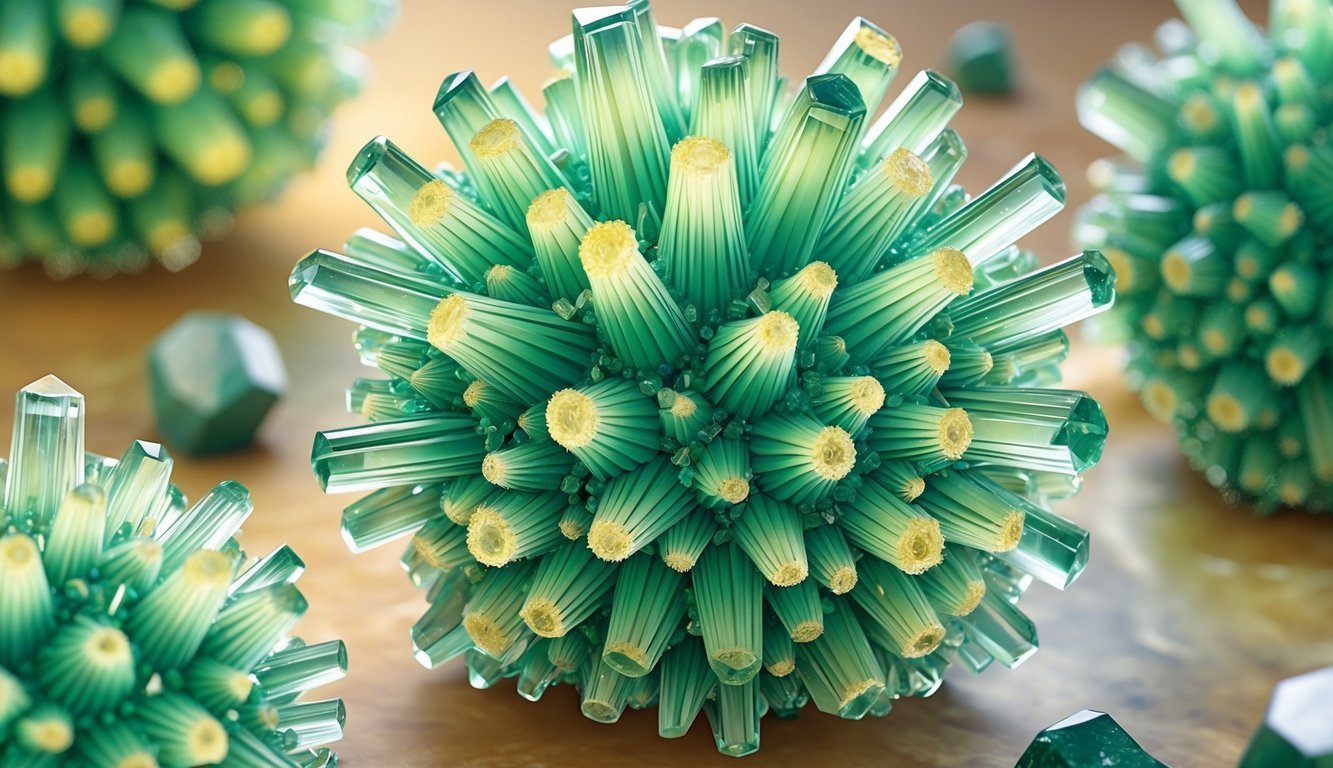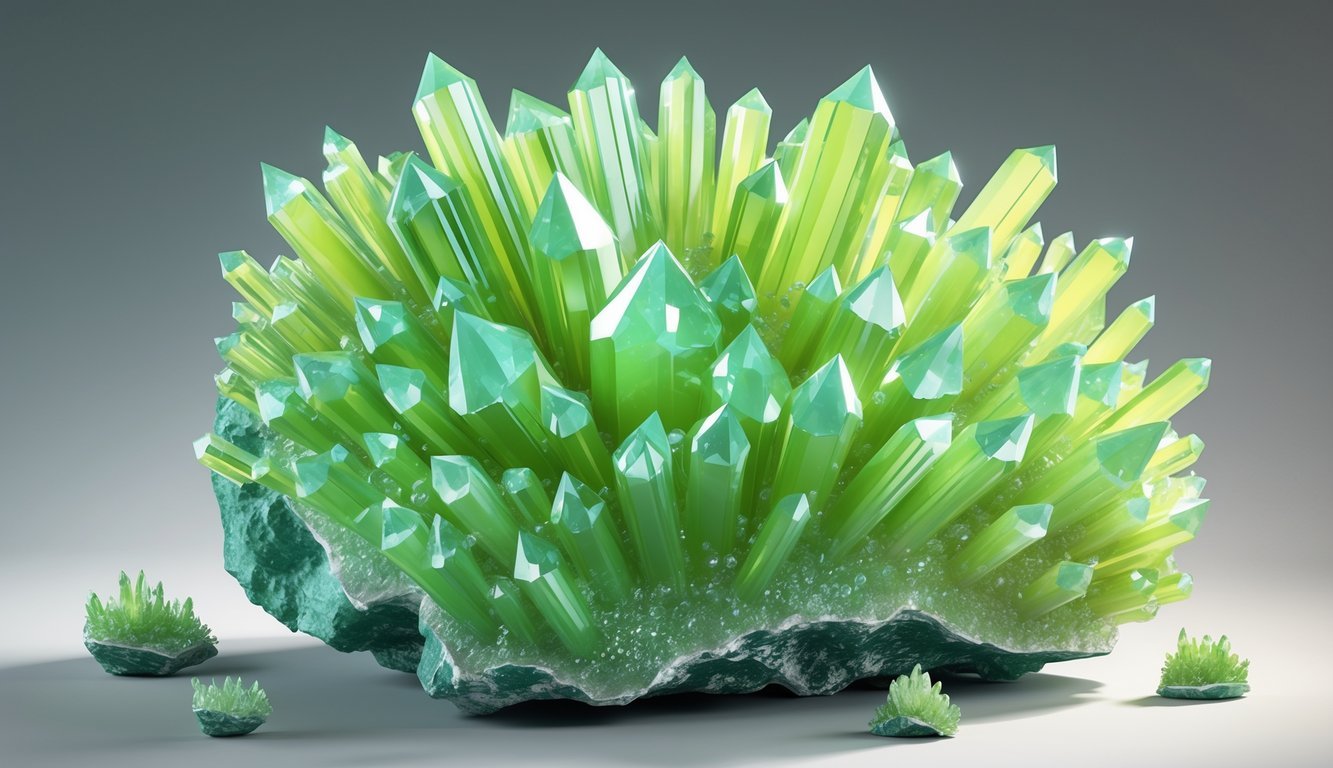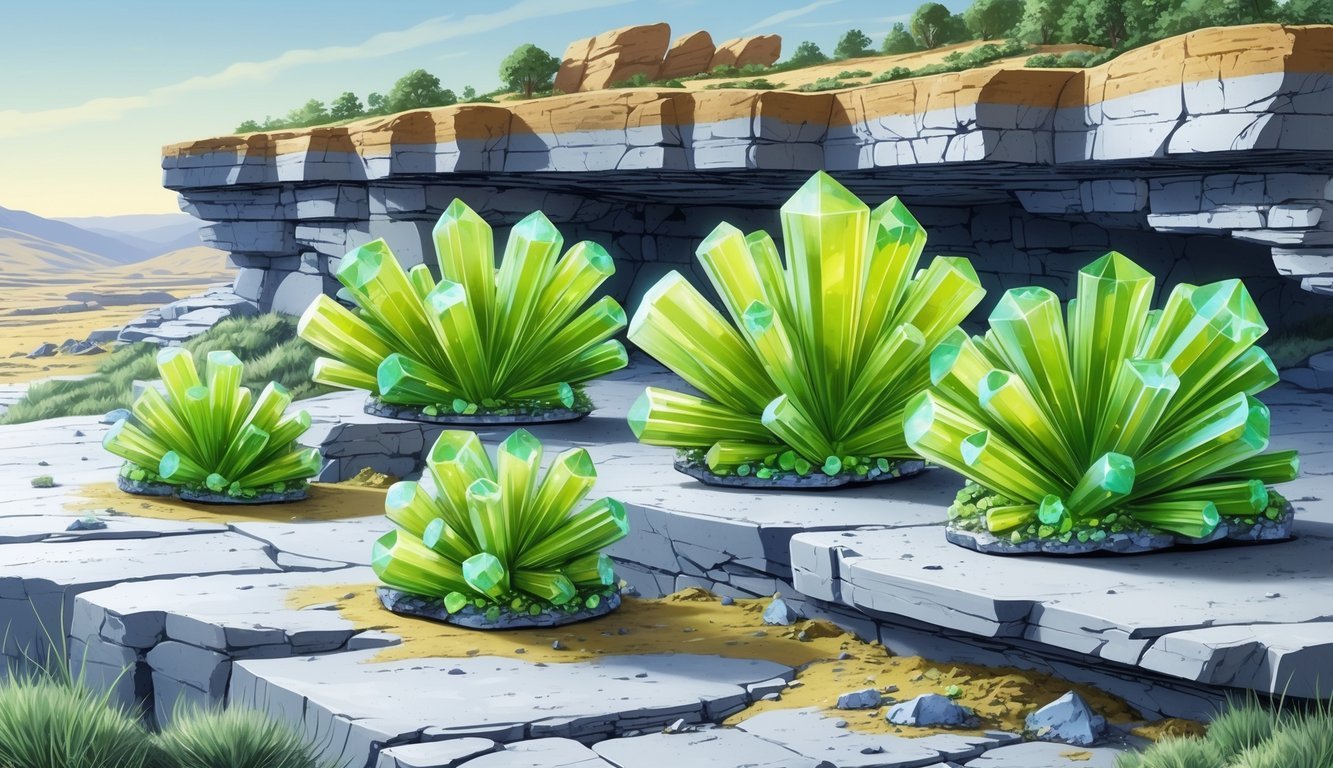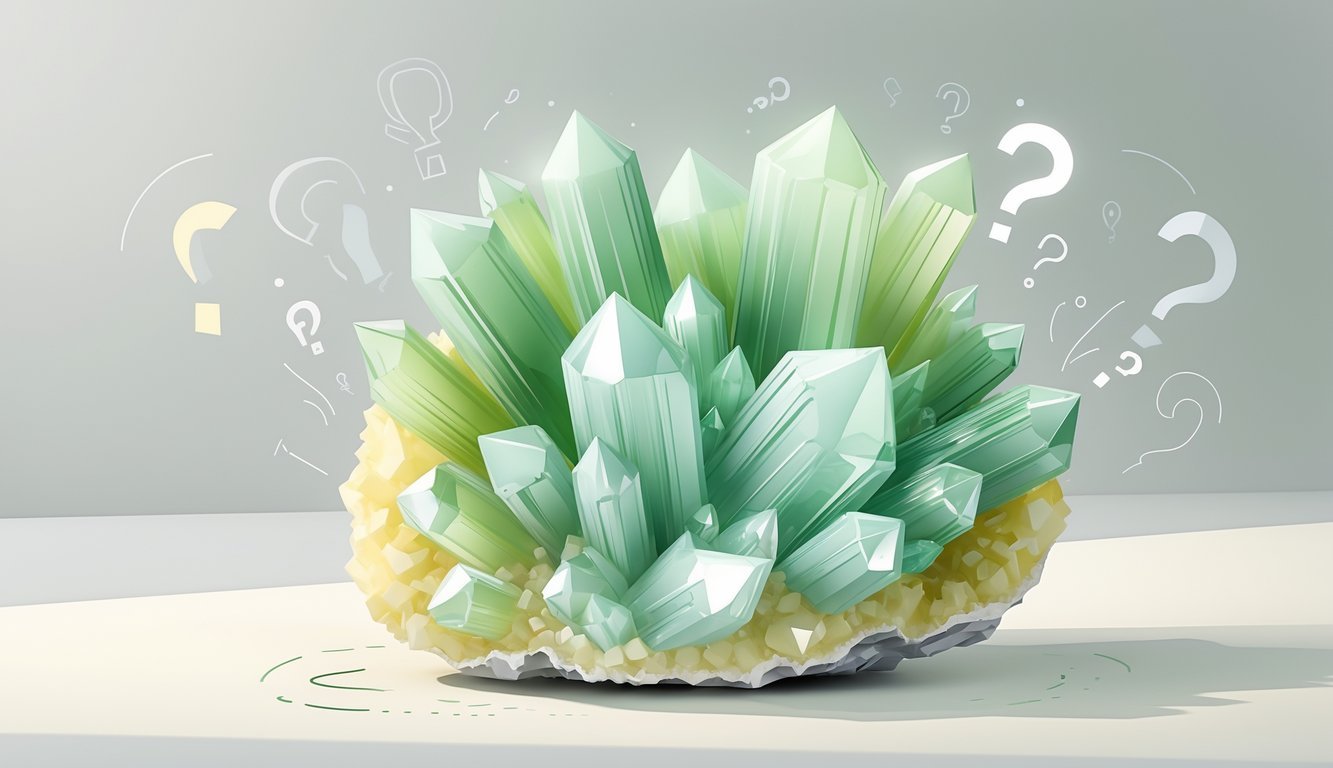PsychNewsDaily Publishers
100 Summit Drive
Burlington, MA, 01803
Telephone: (320) 349-2484
PsychNewsDaily Publishers
100 Summit Drive
Burlington, MA, 01803
Telephone: (320) 349-2484
Wavellite is a phosphate mineral known for its starburst crystal clusters, typically found in aluminum-rich metamorphic rocks, especially in Arkansas and historical sites in England.

Wavellite is a unique mineral that stands out with its beautiful, radiating green or yellow-green crystal clusters.
Collectors and geology fans love it for its starburst shapes. These clusters make wavellite a real eye-catcher.
You’ll usually spot wavellite in certain rocks, especially low-grade metamorphic rocks that are rich in aluminum.
Wavellite isn’t just nice to look at—it’s got a few quirks that make it special.
The crystals are mostly translucent, ranging from light green to yellowish-green.
People know wavellite for its rare formation and striking looks, especially in Arkansas, where collectors prize it.
If you take a closer look at wavellite, you’ll see how it combines natural beauty with a bit of science.
Whether you’re a hobbyist, a collector, or just curious, learning about wavellite can make the world of minerals a bit more exciting.

Wavellite is a phosphate mineral, famous for its unique colors and crystal shapes.
It’s made mostly of aluminum and phosphate, with water in its structure.
You’ll notice wavellite in a bunch of colors and forms, often as clusters or spheres.
Traits like hardness, luster, and transparency help you pick it out from other minerals.
Wavellite belongs to the phosphate mineral family.
Its chemical formula is Al₃(PO₄)₂(OH, F)₃·5H₂O, so it contains aluminum, phosphate groups, hydroxide or fluoride ions, and water molecules.
The water makes it a hydrated aluminum phosphate.
Wavellite forms as a secondary mineral—it shows up after other minerals break down.
Its aluminum and phosphate content set it apart.
If you heat wavellite, it can lose water, which changes some of its properties.
You’ll see wavellite in green, pale yellow, white, blue, brown, black, and sometimes colorless.
Green and yellow pop up most often.
Sometimes, you’ll notice zoning, where different colors appear in the same crystal.
Wavellite has a vitreous luster, so it shines like glass.
It’s usually translucent—light passes through, but you can’t see through it clearly.
Some pieces look more or less transparent, depending on thickness and impurities.
A few wavellite samples glow a bit under UV light, but not dramatically.
Wavellite grows in the orthorhombic crystal system.
You won’t often see perfect single crystals.
Instead, wavellite usually grows in radial aggregates or clusters.
These clusters often look like little balls or rounded sprays.
You might spot wavellite in botryoidal (grape-like) forms or as dipyramidal crystals.
Sometimes, it shows up as radiating needles or fan-like patterns.
Its crystal structure fits a specific space group called Pcmn, which shapes how atoms line up inside.
Wavellite feels pretty soft, with a hardness of 3.5 to 4 on the Mohs scale.
You can scratch it with harder materials, so it’s not the toughest mineral out there.
Its specific gravity runs between 2.36 and 2.40, so it’s fairly light.
Wavellite has perfect cleavage, which means it breaks along smooth, flat surfaces.
When it breaks outside those planes, the fracture is usually conchoidal or uneven.
If you rub it on a porcelain plate, you’ll see a white streak.
Optically, wavellite is biaxial positive with a refractive index around 1.53 to 1.56.
It shows birefringence (a difference in refractive index) between 0.018 and 0.031.
You won’t notice strong pleochroism, so the color stays about the same from different angles.
These features help you confirm it’s wavellite when you’re testing minerals.

You’ll find wavellite mostly in certain rocks and a handful of spots around the world.
It forms in some pretty specific environments and grabs the attention of collectors and mineral fans.
Its story goes back to places in England and the United States.
People traced wavellite’s discovery to the early 19th century.
William Wavell found it in Devon, England, which is why it carries his name.
The high down quarry near Barnstaple is a historic site where scientists first studied it.
Besides England, wavellite pops up in Germany, Bolivia, and Ireland.
Each place has its own version, often tied to the local rocks and geology.
You’ll come across wavellite in old mineral collections and scientific papers, too.
Arkansas stands out as one of the best places to find wavellite, especially in Garland County and around Mount Ida.
Mount Ida is famous for rich mineral deposits.
Spots like Mauldin Mountain, Dug Hill, and Hot Springs in the Ouachita Mountains are top places for wavellite hunters.
Here, wavellite shows up in green to yellow-green clusters that often look like starbursts.
Collectors love Arkansas wavellite for its bright color and cool shapes.
Wavellite forms mostly in aluminous, low-grade metamorphic rocks.
You’ll often find it in weathered phosphate-rich rocks, like aluminous limestones.
Sometimes, it forms in hydrothermal deposits, where hot water helps it grow deep underground.
Nearby, you might spot crandallite, variscite, quartz, iron oxides, aluminum minerals, and sometimes vanadium compounds.
These mineral neighbors help paint a picture of wavellite’s environment.
You probably won’t see wavellite used much in industry, though it can be a minor phosphate source.
Occasionally, people use it as a gemstone, but that’s rare.
The real value is in collecting.
Its colorful, radiating clusters draw in mineral lovers.
Collectors add it for its looks, scientific interest, and connection to famous sites.

Wavellite’s value depends on its size, color, and condition.
People use it for decoration, collecting, and sometimes jewelry.
Some find meaning in its shape and colors.
It turns up in certain parts of the world and has a few interesting properties under UV light.
Wavellite usually holds a moderate value, partly because it’s not super hard—just 3.5 to 4 on the Mohs scale.
Its clarity and bright green or yellow-green color can bump up the price.
Pieces without damage or cracks are always worth more.
You can collect wavellite as a mineral specimen.
It’s great for display, thanks to those unique starburst clusters.
Some folks use it in crystal healing or spiritual practices, though that’s a personal choice.
People say wavellite stands for love, peace, and compassion.
You might find it helpful for emotional balance, as some believe it clears negative energy.
Others think it boosts intuition and emotional strength.
Yes, wavellite sometimes appears in jewelry like rings and pendants.
Because it’s soft and has perfect cleavage, you should look for pieces with protective settings.
It’s less common than other gems, but you might find it if you look around.
You’ll find wavellite in places with aluminous, low-grade metamorphic rocks.
Known spots include parts of the United States, Brazil, and Europe.
It often forms in clusters in these regions.
Wavellite usually doesn’t glow under UV light. If you shine a UV lamp on it, you probably won’t notice any reaction.